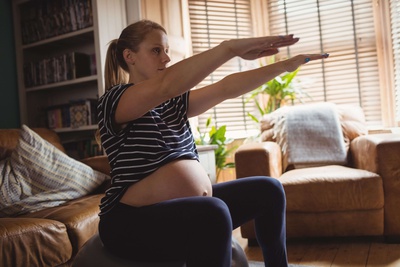Aujourd’hui en France, 1 enfant sur 5 naît par césarienne. En 35 ans, en France comme en Belgique, la fréquence de cette opération a doublé. Dans les années 80, on y recourait dans 10 % des cas. En 2003, la fréquence des césariennes est passée à 20 %. Depuis, les chiffres semblent s’être stabilisés aux alentours de 21%.
Même si à l’heure actuelle, les cicatrices et les séquelles sont presque minimes, il faut malgré tout rester conscient qu’il s’agit d’une opération chirurgicale et que toute opération comporte des risques. La césarienne est un mode d’accouchement différent de l’accouchement naturel par voie basse. Qu’elle soit envisagée par peur de la part de la maman ou par confort pour le médecin ou pour la mère, la césarienne influence les processus intra-utérins liés à la naissance, les processus hormonaux liés à l’accouchement et à l’allaitement, ainsi que les premières minutes de vie de votre bébé, de même que les futures relations mère-enfant et père-enfant.
Risques liés à la césarienne pour la maman
La césarienne qui peut être présentée comme un moyen simple, rapide et facile de mettre un enfant au monde n’est cependant pas un processus naturel. Elle ne devrait être pratiquée que lorsqu’il y a un réel problème en fin de grossesse (bassin vraiment trop étroit ce qui est rare, bébé très mal positionné rare également ou maman épuisée) ou en direct au cours d’un accouchement qui commence tout à fait normalement et qui est entravé par une difficulté.
Cette intervention chirurgicale sous anesthésie générale ou locale (péridurale) comporte des risques et des conséquences à court et à long terme, tant pour la mère que pour le bébé.
Voyons quels sont les risques possibles ?
- Infection postopératoire (infections nosocomiales) : comme pour toute opération, le risque d’infection contractée sur le site opératoire est de plus en plus fréquent. En effet, en raison d’une asepsie beaucoup trop rigoureuse et d’un usage outrancier d’antibiotiques durant plusieurs décennies, les bactéries ont développé une antibio-résistance et elles sont devenues beaucoup plus virulentes (voir staphylocoque doré).
- Adhérences : résultent d’un défaut de cicatrisation avec pour conséquence différents tissus qui se collent les uns aux autres. Cela peut occasionner une gêne ou passer totalement inaperçu.
- Moins d’enfants par la suite
- Augmentation de la fréquence de césarienne lors des grossesses ultérieures : après une première césarienne, le risque d’accoucher par césarienne lors d’une grossesse ultérieure augmente. Les études montrent qu’environ les deux tiers (61,8%) des femmes ayant subi une première césarienne en subissent à nouveau lors des accouchements suivants.
- Augmentation du risque de placenta praevia lors des grossesses ultérieures : Le placenta praevia consiste en une localisation du placenta trop proche du col de l’utérus. Ce dernier peut aller jusqu’à recouvrir le col et rendre le passage du bébé impossible. C’est pourquoi l’emplacement du placenta est systématiquement vérifié lors des échographies de contrôle et particulièrement lors de la troisième échographie, car le placenta remonte en cours de grossesse.
- Difficulté post-partum pour la maman en raison de l’absence de la phase de travail lors de l’accouchement. Ce travail permet entre autres de déclencher les sécrétions de certaines hormones très utiles à l’allaitement et à la remise en place de l’ensemble des tissus et des fonctions physiologiques et émotionnelles de la mère.
- Affaiblissement de l’énergie vitale de la mère puisque toute substance anesthésiante atteint la glande thyroïde, glande de la vie et de l’énergie vitale.
- Mais les anesthésiques demeurent des substances toxiques qui impactent le foie, d’où les vomissements et les malaises éventuels qui peuvent persister chez les femmes sensibles durant les quelques jours qui suivent l’intervention.

Pour information, faire du sport durant la grossesse diviserait par deux le risque d’avoir recours à une césarienne. La pratique sportive aiderait également à accoucher de bébés moins gros, donc plus faciles à expulser.



